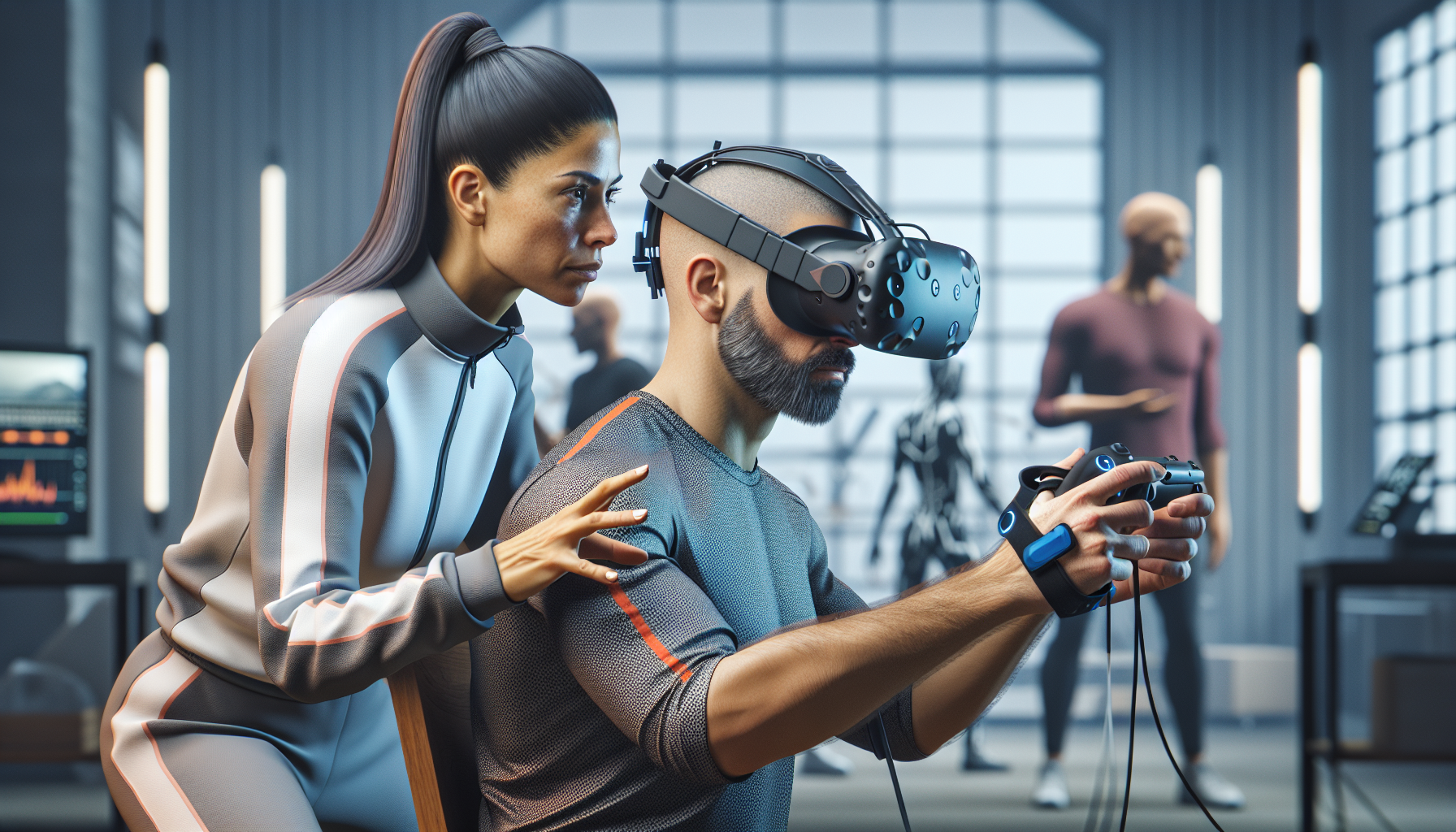Overview of Neurofeedback in VR Gaming
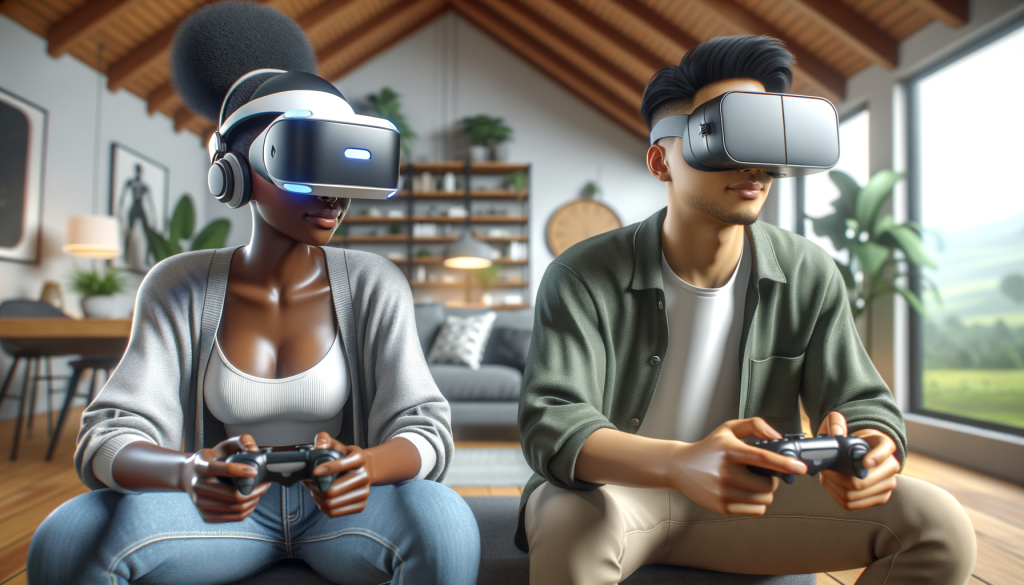
Key Points
- Virtual Reality (VR) is increasingly used in therapeutic settings, particularly for mental health and cognitive function improvement.
- Neurofeedback (NF) involves training individuals to regulate their brain activity, which can be enhanced using immersive VR environments.
- Recent studies suggest that VR can make NF training more engaging and effective, potentially leading to better outcomes in shorter training periods.
- Chronic pain management has seen promising results with VR-integrated NF, showing significant symptom improvement.
- There is a growing interest in developing VR games incorporating NF for both therapeutic and recreational purposes.
What is Neurofeedback?
Neurofeedback (NF) is a type of biofeedback technique. It uses real-time displays of brain activity, typically electroencephalography (EEG), to teach self-regulation of brain functions. Sensors placed on the scalp measure electrical activity and key metrics are displayed to the user through a computer interface. By watching these metrics and modifying their brain activity, individuals can learn to control or improve their mental state and cognitive performance.
This technique has been used in various therapeutic settings, including treatment for ADHD, anxiety, depression, and chronic pain. Integrating NF into VR gaming is a progressive step towards making this technology more accessible and engaging. It has the potential to increase its effectiveness through immersive experiences.
Benefits of VR in Neurofeedback
The immersive nature of VR can significantly enhance the neurofeedback process by creating more engaging and controlled environments for users. This immersion can lead to higher levels of concentration and focus, which are critical for effective NF training.
Moreover, the use of VR allows for the incorporation of gamified elements in NF training. This can improve motivation and compliance, especially in younger populations. Gamification not only makes the training process more enjoyable but can also lead to faster learning and better outcomes. Users are more likely to stick with an entertaining regimen.
Challenges in Creating Immersive VR Neurofeedback Games

Technical Complexity
Developing VR games that effectively integrate neurofeedback involves complex programming and an understanding of both game design and neuroscience. Developers must ensure that the neurofeedback provided through the game is accurate and beneficial. This requires precise calibration and integration of EEG sensors with VR technology.
This integration must be seamless to maintain immersion, which is crucial for the effectiveness of neurofeedback. Any lag between the user’s actions and the game’s response can disrupt the training process, potentially reducing the benefits of neurofeedback.
User Experience Design
The success of VR neurofeedback games heavily relies on user experience design. The game must be engaging enough to keep users motivated, but not so challenging that it becomes frustrating. This balance is crucial to ensure that users continue using the game long enough to reap the neurofeedback benefits.
Additionally, the design must accommodate various user sensitivities and preferences to prevent issues such as VR sickness, which can occur from prolonged exposure to virtual environments. This involves optimizing graphical elements, motion dynamics, and interaction designs to create a comfortable and enjoyable experience for all users.
Accessibility and Cost
While VR technology is becoming more accessible, the cost of VR headsets and the computers needed to run them remains high. This can be a barrier to entry for many users who might benefit from VR neurofeedback games. Additionally, the need for specialized EEG equipment adds another layer of expense and complexity.
Developers must consider these factors when designing VR neurofeedback games to ensure they are accessible to a wider audience. This might involve developing less resource-intensive versions that can run on lower-end VR systems. Additionally, integrating with more affordable EEG solutions can also enhance accessibility.
Solutions to Enhance VR Neurofeedback Game Development
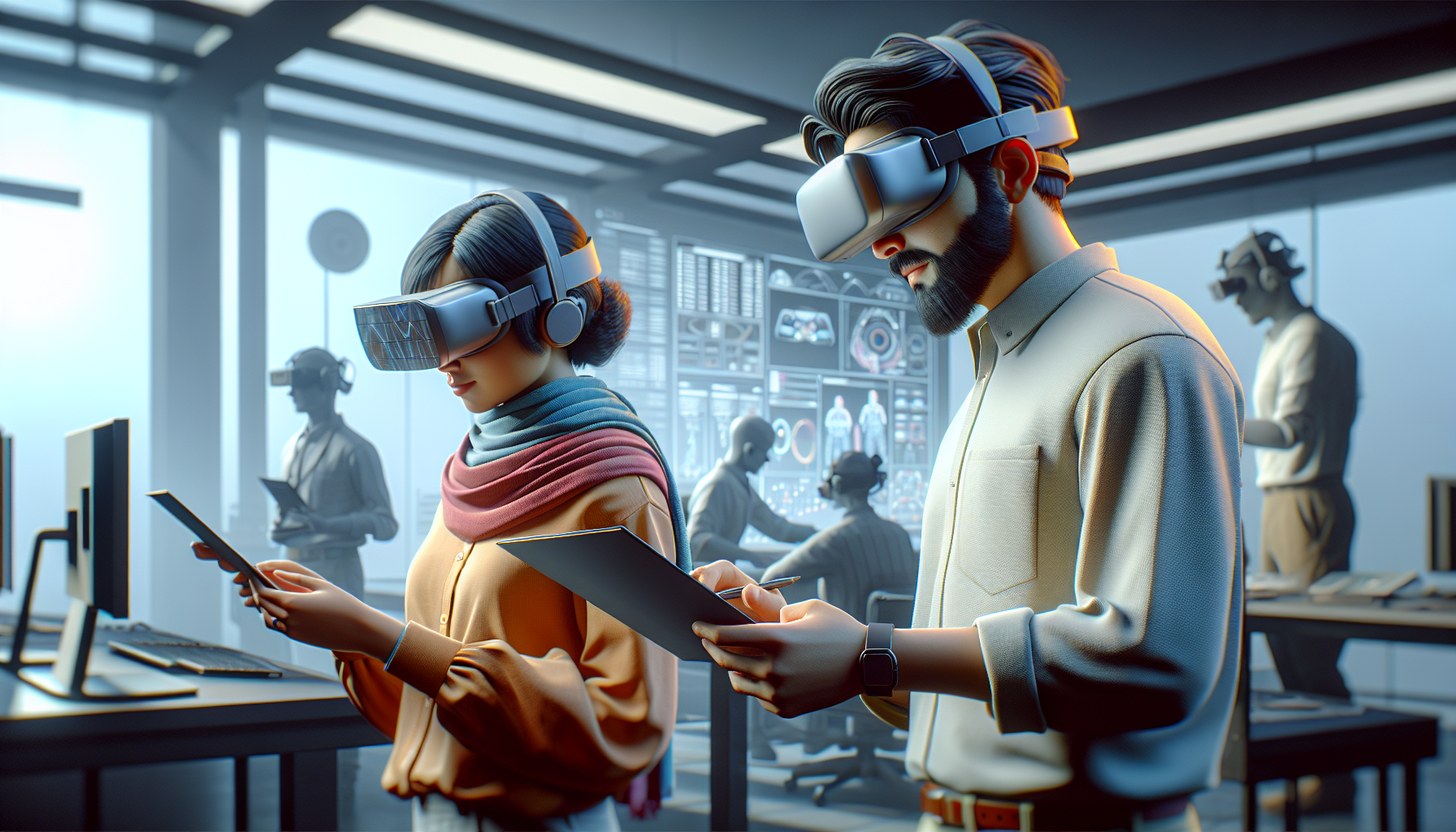
Step 1: Simplifying Technology Integration
To address the technical challenges, developers can use advanced game development platforms that support easy integration of VR and EEG technologies. These platforms often come with pre-built libraries and APIs that simplify the process, allowing developers to focus more on the creative aspects of game design.
Collaborations between neuroscientists and game developers can also facilitate the development of effective neurofeedback mechanisms within the game.
Step 2: Focusing on User-Centric Design
Enhancing user experience design involves extensive user testing to gather feedback on the game’s usability and enjoyment. Iterative design processes, where adjustments are made based on user feedback, can help in fine-tuning the game to meet the needs of a diverse user base.
Incorporating adaptive difficulty levels and personalized game content based on the user’s progress and preferences can also make the game more engaging.
Step 3: Making VR Neurofeedback Games More Accessible
To overcome barriers related to cost and accessibility, developers can explore partnerships with hardware manufacturers to bundle neurofeedback VR games with VR headsets or EEG devices at a discounted rate. Such bundles can make the initial investment more affordable for users.
Additionally, developing cloud-based versions of these games could reduce the need for high-end hardware. Users could stream the games directly to their devices, making it easier and more cost-effective to access advanced VR neurofeedback training.
Example Code for VR Neurofeedback Game Integration
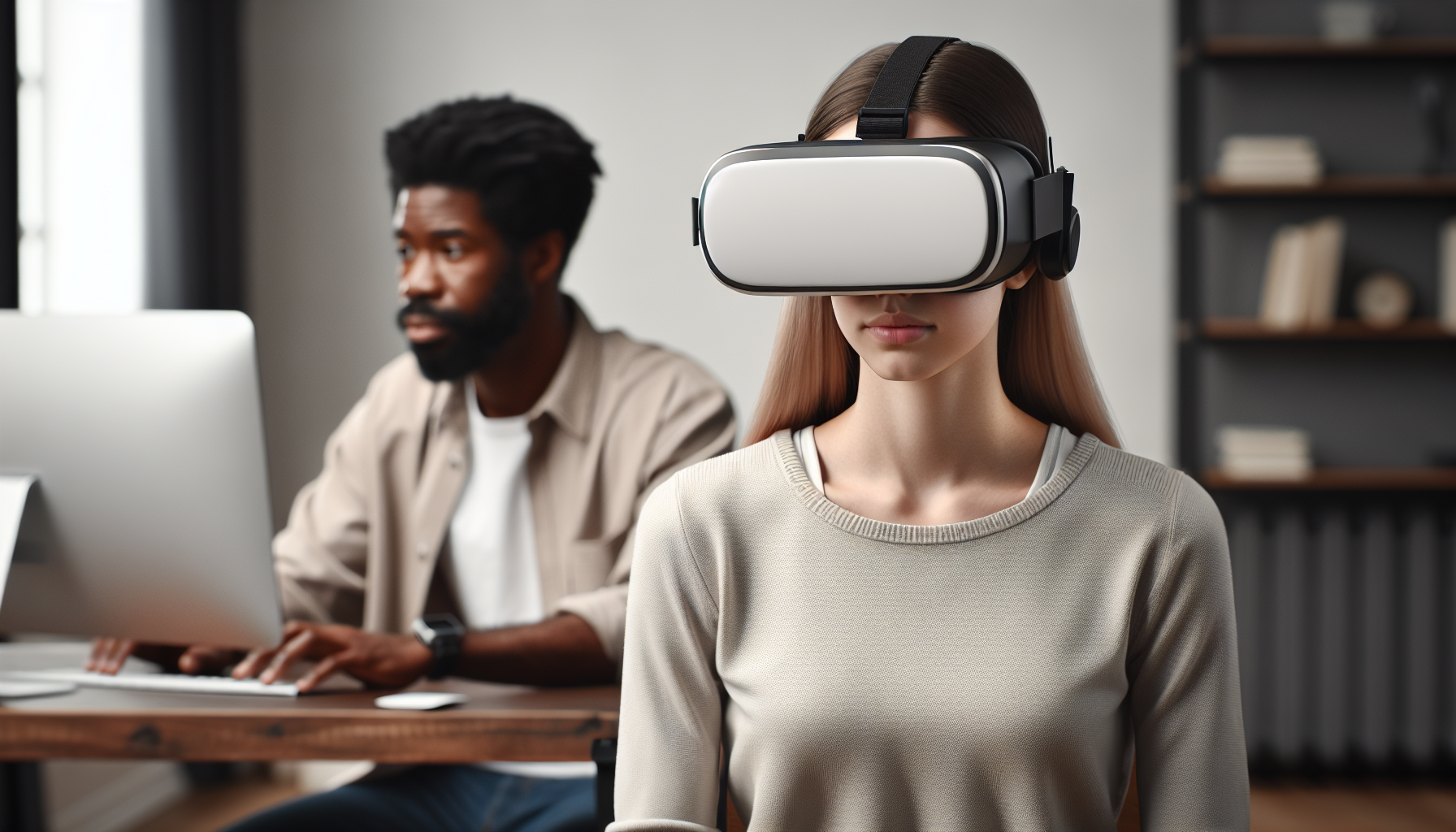
This section provides a Python example demonstrating how to integrate neurofeedback data into a VR game environment using popular libraries such as Pygame for game development and MNE-Python for EEG data analysis.
import pygame
import mne
from pygame.locals import *
class NeuroFeedbackGame:
def __init__(self, screen_size=(800, 600)):
pygame.init()
self.screen = pygame.display.set_mode(screen_size)
self.clock = pygame.time.Clock()
self.running = True
def load_eeg_data(self, filepath):
""" Load EEG data from a file. """
raw = mne.io.read_raw_fif(filepath, preload=True)
return raw
def process_eeg_data(self, raw_data):
""" Process EEG data to extract neurofeedback metrics. """
# Example: Extract alpha waves for relaxation feedback
picks = mne.pick_types(raw_data.info, eeg=True, exclude='bads')
epochs = mne.make_fixed_length_epochs(raw_data, duration=1.0, picks=picks)
alpha_power = epochs.copy().filter(8, 12).get_data().mean(axis=2)
return alpha_power
def run(self):
eeg_data = self.load_eeg_data('path_to_eeg_file.fif')
alpha_levels = self.process_eeg_data(eeg_data)
while self.running:
for event in pygame.event.get():
if event.type == QUIT:
self.running = False
self.screen.fill((0, 0, 0)) # Clear screen
alpha_level = alpha_levels.mean() # Get average alpha level
color_intensity = int(alpha_level * 255) # Convert to color intensity
color = (color_intensity, 0, 0) # Red color scale based on alpha level
pygame.draw.circle(self.screen, color, (400, 300), 50) # Draw circle based on alpha level
pygame.display.flip()
self.clock.tick(60) # Maintain 60 frames per second
pygame.quit()
# Example usage
game = NeuroFeedbackGame()
game.run()
The code above initializes a basic game window using Pygame, where a circle’s color intensity changes based on the average alpha wave levels from EEG data, demonstrating a simple form of neurofeedback. The EEG data is processed using MNE-Python, a library designed for processing electrophysiological data.
Future Predictions
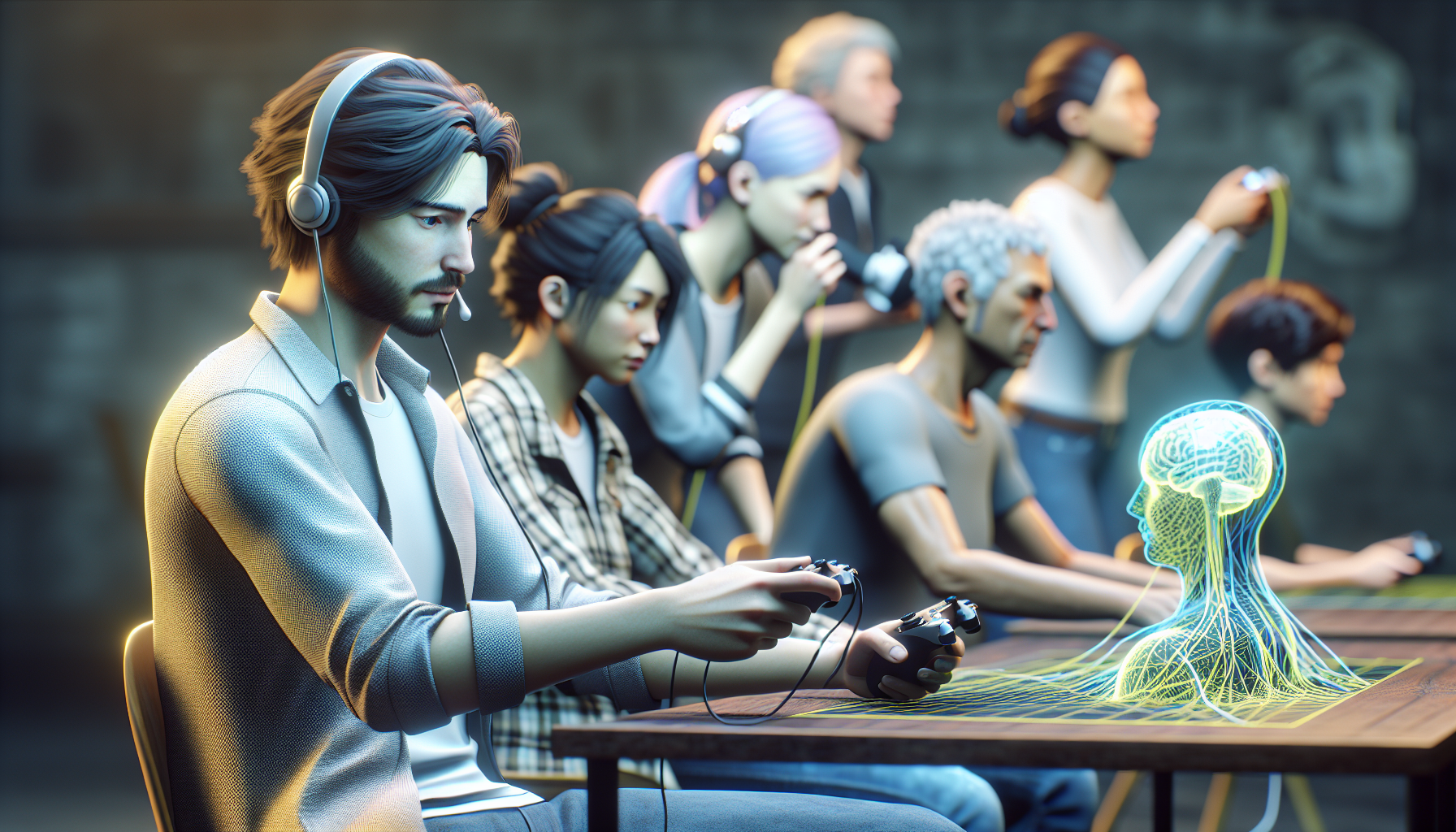
As technology advances, the integration of neurofeedback in VR gaming is expected to grow, leading to new developments and applications. Here are five predictions for the future of this technology:
- Increased Accessibility: Advances in technology and reductions in costs will make VR and neurofeedback more accessible to a broader audience.
- Enhanced Realism: Future VR neurofeedback games will offer even more realistic and immersive experiences, making the training more effective and enjoyable.
- Expansion into New Areas: Neurofeedback will find new applications in areas such as education, where it can be used to enhance learning and concentration.
- Integration with Other Technologies: Neurofeedback may be combined with other technologies like AI to provide more personalized and effective training.
- Broader Acceptance in Therapy: As evidence of its effectiveness grows, neurofeedback will become a more accepted and common part of therapeutic practices.
More Information
- Games for mental health therapy: A discussion platform where users share experiences and information about VR and mental health.
- Virtual Reality Neurofeedback: Insights into the integration of VR with neurofeedback.
- Emotional self-regulation, virtual reality, and neurofeedback: Scientific articles on the latest research in VR and neurofeedback.
- Effects of virtual reality-based feedback on neurofeedback training performance: A sham-controlled study.
- Flowborne VR – Biofeedback Breathing Meditation: An example of a VR game that uses biofeedback to aid in meditation and relaxation.
Disclaimer
This article is generated by AI for educational purposes and does not intend to provide specific advice or recommendations for any individual or on any specific security or investment product. It is only intended to provide information on neurofeedback integration in VR gaming. We encourage you to consult with a professional or an expert before making any decisions related to the content of this article. The views and opinions expressed in this article are those of the AI and do not necessarily reflect the official policy or position of any agency or company.
- The Agentic Startup Manifesto - June 8, 2025
- Remote Hiring in 2025 - April 5, 2025
- Burnout in Remote Teams: How It’s Draining Your Profits - January 27, 2025
